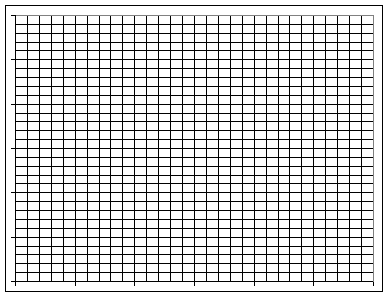
class 050912
For the parabolic function y = f(t) = 2 t^2 - 12 t + 10.

For this function:
Determine the location of the vertex of each of the following quadratic functions:
y = x^2 + x + 1
y = x^2 + 2x + 1
y = x^2 + 3x + 1
y = x^2 + 4x + 1
y = -2 x^2 + 4x + 3
Sketch a graph for each function showing 3 points: the vertex and the points 1 unit to the right and 1 unit to the left of the vertex.
Sketch the graph of each function, based only on the 3 points you have sketched and your knowledge that the graph is a parabola.
3. Zeros of a quadratic function:
Use the quadratic formula to find the zeros of each of the functions in the above exercise. Note that some functions will not have any zeros, some will have 1 zero and some will have two.
For each function sketch on the graph the points corresponding to each of these zeros, and determine whether the graph you have sketched is consistent with the location of these zeros.
For each of your graphs, comment of the statement that the vertex lies halfway between the zeros.
If you were to draw a smooth curve passing through the vertex of each of the first four graphs, what can you say about the shape of the curve?
3. Sketch a reasonable graph of y = f(x), if it is known that f(2) = 80, f(5) = 40 and f(10) = 25.
Use your graph to estimate the following:
The value of x for which f(x) = 60.
The value f(7).
The difference between f(7) and f(9).
The difference in x values between the points where f(x) = 70 and where f(x) = 30.
4. If a temperature vs. clock time function is given by y = temperature = T(t), then what is the symbolic expression for each of the following:
The temperature at time t = 3.
The temperature at time t = 5.
The change in temperature between t = 3 and t = 5.
The average of the temperatures at t = 3 and t = 5.
What equation would we solve to find the clock time when the model predicts a temperature of 150?
How would we go about finding the length of time required for the temperature to fall from 80 to 30?
5. Questions about your depth vs. time model
For your model of depth vs. time, based on in-class measurements, answer the following questions and give detailed reasons for your answers as well as sketches. Use the f(x) notation at every opportunity as you give and reason out your answers:
For how long was the depth between 34 and 47 centimeters?
By how much did the depth change between t = 23 seconds and t = 34 seconds?
On the average, how many seconds did it take for the depth to change by 1 centimeter between t = 23 seconds and t = 34 seconds?
On the average, how by many centimeters did the depth change per second between t = 23 seconds and t = 34 seconds?
6. A hypothetical depth vs. time model based on three points, none of which are actual data points
Sketch a graph of the following depth vs. time data:
( 0 sec, 96 cm)
(10 sec, 89 cm)
(20 sec, 68 cm)
(30 sec, 65 cm)
(40 sec, 48 cm)
(50 sec, 49 cm)
(60 sec, 36 cm)
(70 sec, 41 cm)
These data were obviously taken by someone with either bad instruments or a high degree of incompetence. However, on the average they might well give a good quadratic model.
Sketch the data and sketch a smooth curve that doesn't touch any data points but comes as close as possible to the data points, on the average. Your curve will go pretty much through the middle of the data set.
Pick three points on this curve, approximately equally spaced in the y direction, and use them as a basis for constructing a function model.
Determine the average deviation for your model, and graph your function.
How close is your model to the curve you sketched earlier?
How well does your function seem to model the data?